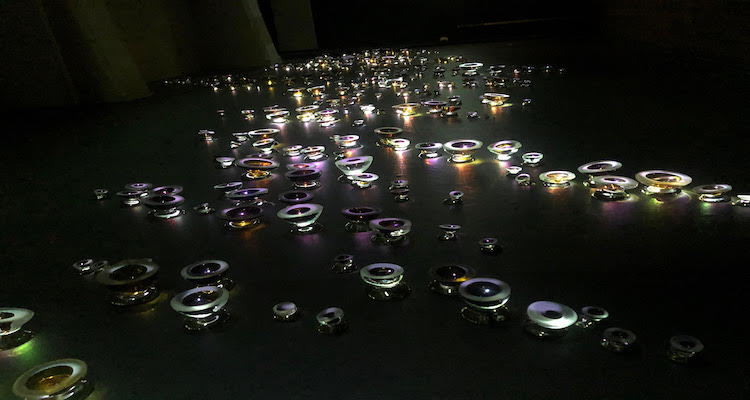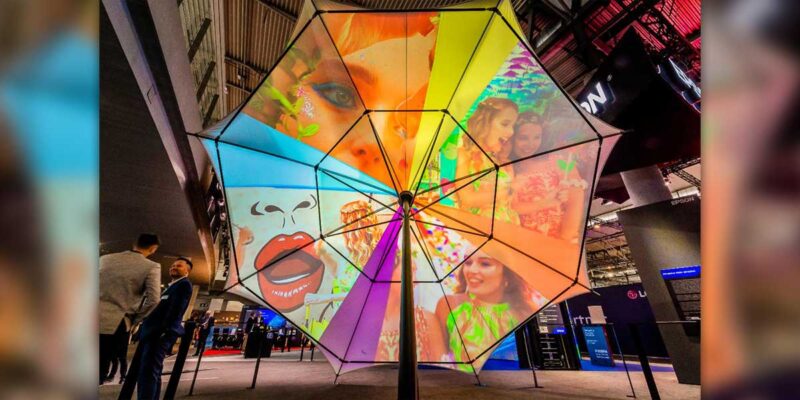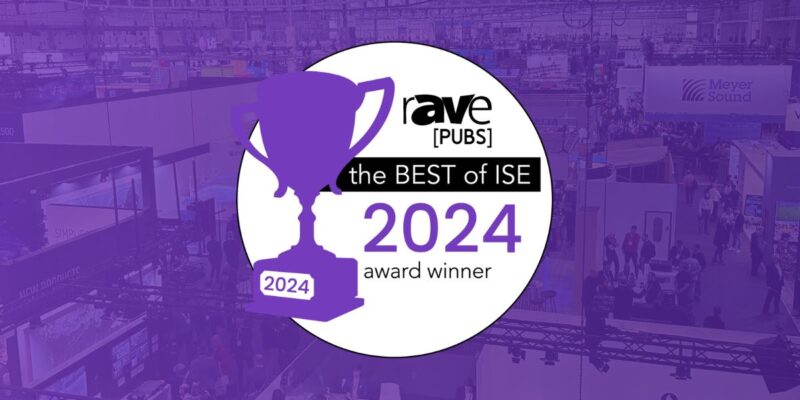Is This The Best Projection Mapping Story Ever?

Artist Michael Skura had been working with hand-blown glass for more than a decade when one day, a single beam of light passing through a piece of glass in his studio caught his eye. The effect was both magical and subtle, inspiring him to explore the possibilities of light and glass through controlled illumination and projection.
Just over five years later, Skura and collaborators AJ Freysteinson, Creative Director at RabCup and Meghan Athavale, CEO of LUMOplay, are using 19 Epson LightScene accent lighting and three PowerLite L615Ulaser projectors for an interactive light art exhibit. The movement and sound responsive show, entitled “Tendrils,” is currently running at the Riverside Art Museum, in conjunction with The Festival of Lights, in Riverside, California.
“From a single beam of light playing on a piece of glass, to the complex effects created by video and color, this has been a fascinating process of discovery and invention,” said Skura. “Light has become the central focus of my work. The possibilities to recreate and amplify light are greatly expanded with Epson laser solutions. The projectors provide intriguing lighting phenomena and prismatic color separations without aesthetically taking over the exhibit.”
The installations that comprise “Tendrils” are designed to push the boundaries of materials and technologies and celebrate the essence and creative expression of the materials. Instead of fighting the natural inclinations of molten glass, which many glass artists see as defects, Skura “coaches” glass to have a mind of its own. This is done through asserting itself through distortions, bubbles, debris and stress marks. Lighting, interactive technology and gaming technology are integral to crafting responsive sculptures that change and flow with the movements of passersby, encouraging visitors to slow down, observe and embrace a mindful, meditative and receptive state.
Blending technology with artistic vision, the installation required sophisticated methods to amplify the interactive effect of the light on the glass elements. Skura employed more than 20 Epson laser projectors to illuminate the art pieces, rigging them discretely throughout the exhibit. He worked closely with Freysteinson on content creation, design and production, and with Athavale to coordinate content across all projectors, creating the interactive aspects for each piece using LUMOplay interactive display software.
Here’s a video so you can see this from conception to installation — watch all the way through!
The first piece, titled “Shy,” transforms over 500 pieces of wall-mounted hand-blown glass into an undulating array of elusive, twinkling creatures. As the motion slows and quiets around the shy wall, the glass pieces gradually illuminate and come forward to meet and interact with visitors. Sudden movements and loud sounds result in a quick scamper away into the darkness of the black wall. A second piece, called “Television,” displays large glass orbs on a wall-mounted board with proportions resembling a flat-panel TV. Video content is mapped only on the glass, producing light tendrils and a motion sensor that triggers additional distortion of the image, similar to pebbles in a reflecting pool, when viewers are still and quiet.
“Skura’s unique vision, from the colors he has chosen to the sculptural element of his work, explores the contrast between purity and complexity, brightness and darkness,” said Remi Del Mar, senior product manager, Epson America, Inc. “Light is a significant component in his art, and being able to introduce Epson’s projection technology as a source of light in this impressive installation is a step toward the future — where we see the lines between art, technology and human experience continue to blur.”
The “Tendrils” exhibit is free and open to the public and will run through Jan. 5, 2020, at the Riverside Art Museum in Riverside, California.





